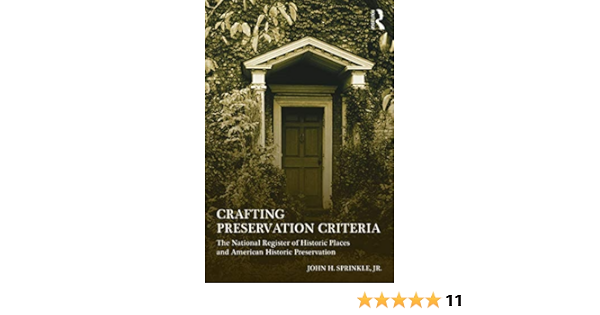The National Register of Historic Properties serves as a vital tool in preserving the architectural, cultural, and historical heritage of the United States. Established to recognize and protect sites of significant value, the Register ensures that these important landmarks are not forgotten, offering protection and support for their preservation. In this guide, we will explore the key aspects of the National Register, including the criteria for inclusion, the benefits of listing, and recent additions. Additionally, we will highlight success stories of preserved properties and provide a step-by-step guide on how individuals can nominate properties to be included in this prestigious registry.
Explore this topic in-depth with ritarblog.com
1. Overview of the National Register of Historic Properties
The National Register of Historic Places, created through the National Historic Preservation Act of 1966, serves as the official record of sites, buildings, structures, objects, and districts in the United States deemed worthy of preservation. Administered by the National Park Service, the Register recognizes properties significant at the national, state, or local level for their contributions to American history, architecture, archaeology, engineering, or culture.
The National Register is a vital tool for safeguarding and commemorating the nation’s heritage. Its purpose is to protect historically significant places for future generations, offering legal safeguards against potential demolition or unauthorized alterations. While listing a property does not automatically prevent changes, it provides opportunities for preservation incentives, grants, and tax benefits, encouraging the maintenance of its historical integrity. Currently, over 95,000 properties are listed on the National Register, showcasing the diverse cultural and historical tapestry of the country. Each property contributes to the larger narrative of America’s past and its preservation for generations to come.

2. Criteria for Inclusion in the Register
To be included in the National Register of Historic Properties, a site must fulfill specific criteria demonstrating its importance in American history, architecture, archaeology, engineering, or culture. Eligibility typically requires a property to be at least 50 years old, although exceptions can be made for sites of exceptional historical significance. The evaluation process is guided by four main criteria:
Historical Significance: The property must be linked to events, activities, or developments of national or local historical importance.
Association with Significant Individuals: The site must be directly linked to the lives of notable figures in American history.
Architectural merit is recognized in properties that:
* Exemplify distinctive characteristics of a specific type, period, or construction method.
* Represent the work of a master architect.
* Possess high artistic value.
Archaeological Significance: Properties possessing, or with a high probability of possessing, significant information about prehistory or history, which can be unearthed through archaeological research.
Furthermore, the property must maintain its historical integrity. This means it should retain its original physical characteristics, such as its location, design, materials, and overall craftsmanship, which contribute to its historical significance. By adhering to these standards, the property will be recognized and protected as a vital component of the nation’s rich cultural heritage.

3. Benefits of Listing a Property
Listing a property on the National Register of Historic Properties offers a variety of benefits that encourage its preservation and protection. One of the most significant advantages is the access to federal preservation grants and tax incentives. Property owners can apply for federal grants to help fund restoration efforts, while commercial properties may qualify for federal tax credits for rehabilitation work that adheres to specific preservation standards.
Another key benefit is the level of protection provided against federally funded or licensed projects. If a project might negatively impact a listed property, the federal agency involved must assess the potential harm and seek alternatives to avoid or mitigate damage. This safeguard ensures that historic properties are taken into account during development or infrastructure projects.
Additionally, being listed on the National Register raises public awareness of the property’s historical and cultural significance, often leading to increased local support and recognition. This heightened visibility can attract tourism, boost local economies, and promote community pride.
Importantly, listing on the National Register does not impose restrictions on what private owners can do with their property unless federal funding is involved. However, the incentives and recognition encourage responsible stewardship, helping to ensure that these valuable historic sites are preserved for future generations.

4. Recent Additions to the National Register
The National Register of Historic Properties has steadily expanded in recent years, showcasing a dedicated commitment to protecting a diverse array of sites with significant cultural, historical, and architectural value. The latest additions to the Register demonstrate this commitment by encompassing a wide range of properties, from rural landscapes to urban landmarks.
For example, the listing of the Boyd House in Washington, D.C. on the National Register of Historic Places shines a light on a crucial chapter in American civil rights history. This house served as the residence of activist Nannie Helen Burroughs, a renowned educator and champion of women’s rights. Through its inclusion on the Register, the Boyd House stands as a testament to the legacies of African American leaders who played a pivotal role in advancing social progress across the United States.
The Register recently included the Golden Gate Village in California, a mid-century public housing project designed by the celebrated architect Frank Lloyd Wright. This addition highlights the Register’s commitment to recognizing modern architectural styles that have significantly influenced community development.
The National Register’s inclusion of these examples, alongside other recently added properties, demonstrates its ongoing commitment to reflecting the evolving history of the United States. By safeguarding a diverse range of sites, it guarantees that future generations will be able to appreciate the multifaceted and rich heritage of our nation, acknowledging both renowned landmarks and lesser-known gems scattered across the country.
5. Success Stories: Preserved Properties
The National Register of Historic Properties has played a pivotal role in the preservation of many significant sites across the United States, with numerous success stories illustrating the power of listing. One notable example is the Old Post Office Pavilion in Washington, D.C. Once threatened with demolition, this historic building was saved and restored after being listed on the National Register. Today, it serves as a vibrant hub of commerce and tourism while retaining its historical charm.
Another success story is the Acoma Pueblo in New Mexico, one of the oldest continuously inhabited communities in the U.S. Listing on the National Register helped the Acoma people secure funding to preserve their unique adobe structures and maintain their cultural heritage. The site now attracts visitors from around the world, offering a window into Native American history.
Additionally, the preservation of Michigan Central Station in Detroit is a prime example of how listing a property can lead to revitalization. Once abandoned and in disrepair, the station was listed on the National Register, leading to its restoration and adaptive reuse as a technology innovation hub.
These stories demonstrate how the National Register helps ensure that historic properties remain vital parts of their communities, blending preservation with modern utility.
6. How to Nominate a Property for the Register
Nominating a property for the National Register of Historic Properties is a comprehensive process that begins by establishing its eligibility. The initial step involves contacting your State Historic Preservation Office (SHPO) or Tribal Historic Preservation Office (THPO) to discuss the property’s historical significance and gather preliminary data. These offices can provide guidance on the required documentation, including historical research, photographs, and maps, to substantiate the nomination application.
After preliminary evaluation determines potential eligibility, a formal nomination form must be submitted. This form demands a detailed account of the property, encompassing its architectural characteristics, historical background, and significance based on the National Register’s criteria. Accompanying documentation, including historical records or expert assessments, is vital to establish a robust case for nomination.
Once submitted, the nomination is reviewed by the State Historic Preservation Office (SHPO) or Tribal Historic Preservation Office (THPO), followed by a final review from the National Park Service. Upon approval, the property is officially listed on the National Register, provided it meets all necessary criteria.
This comprehensive process guarantees that only properties of genuine historical importance are identified and safeguarded for future generations, ensuring their preservation and acknowledgment.
The National Register of Historic Properties is crucial in preserving America’s rich heritage, offering benefits like protection and funding for historic sites. By understanding the criteria, benefits, and nomination process, we can all contribute to safeguarding these valuable landmarks, ensuring they continue to educate and inspire future generations.
ritarblog.com

